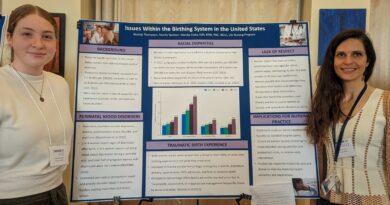On Stoicism: A Student’s Thoughts on Dr. Pigliucci’s Lecture About Stoicism
Written by Brooke Stevenson
As someone who learns better visually and hands-on, I struggle to learn about a philosophy only through readings. This is why I appreciated Dr. Massimo Pigliucci’s talk on Stoicism. He started off with the basics: what is a philosophy of life? He described a philosophy of life as a framework that is made of three components. Those components are metaphysics, ethics, and a set of practices to guide someone in following the principles of ethics. He then went on to explain these three different components using different religions as examples. He used Christianity and Buddhism alongside a table to compare the two religions in each of the three areas. The table helped me follow along with what Dr. Pigliucci was saying and get a better understanding of the material that I was already learning in my Discovering Philosophy class with Dr. Curry. To me the table was like an equation:
Religion/Philosophy = Metaphysics + Ethics + Practices

When broken up into these pieces, the philosophy seems less intimidating and is easier to understand. I find this much easier than reading a book that may contain an overwhelming amount of complex and unfamiliar information.
After discussing the basics of a philosophy of life, Dr. Pigliucci began talking about how Stoicism came to be and how it has evolved through time. During this walk through history, the way in which Dr. Pigliucci pieced together the foundations of modern Stoicism was fascinating. One point that particularly stood out was how women were allowed to practice Stoicism. During the time period in which Stoicism was popular, women were typically seen as nothing more than “broodmares,” valued only for their ability to produce children. Women were generally considered unworthy of an education but were still permitted to practice Stoicism. From there, Dr. Pigliucci began talking about the basics of Stoicism and provided examples of specific practices associated with the philosophy. I found Dr. Pigliucci’s lecture quite helpful as he provided an alternate view of what I was learning and reading about, while also helping his audience better understand the information through the use of visual representations and analogies.
One of the pillars of Stoicism tells us that we need to focus on what we can control and accept what we cannot, which has real world applications as a common method or skill used and taught in behavioral and cognitive therapies. In fact, Stoicism is one of the theoretical roots of Cognitive Behavioral Therapy. Furthermore, his lecture helped with my understanding of Stoicism and allowed me to succeed in class discussions and on my Stoicism test. I hope to see more lectures like Dr. Pigliucci’s at USJ in the future and recommend that students take advantage of them.


